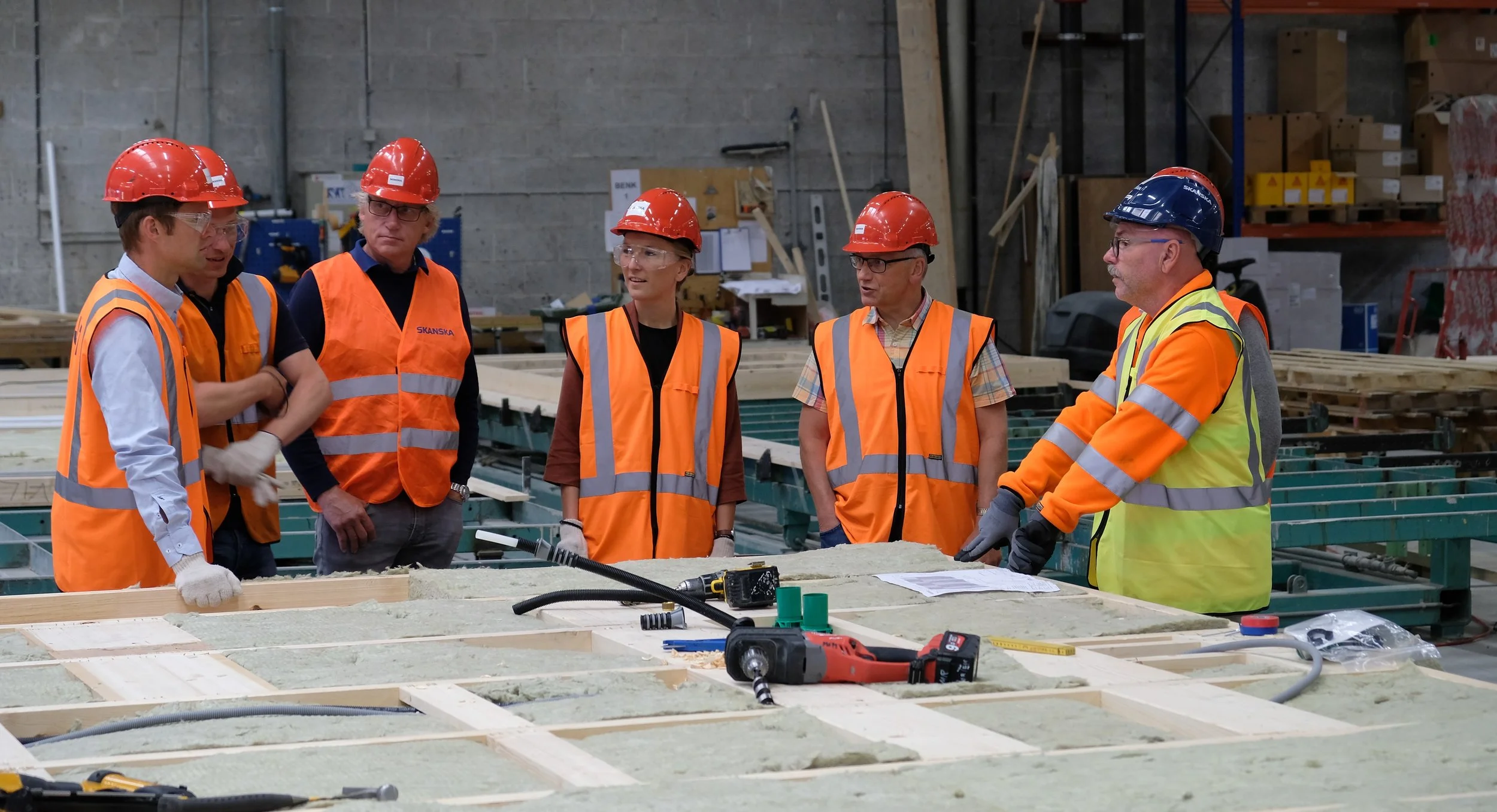The pilot is owned by:
Aim of the pilot project
The pilot project consist of 60 dwellings in Gruvedalen, Longyearbyen, executed with compact wooden roof and smart vapour barrier. The roof is part of Skanska Husfabrikken construction modules, and built with wooden loadbearing beams with mineral wool insulation between the beams, underlayer roof, and grey asphalt roofing. The vapour barrier «DuPontTM AirGuard®Smart» (SINTEF Certification No. 20321) delivered by Isola is used.
NTNU and SINTEF have, in cooperation with Isola, conducted extensive calculations and laboratory tests on compact unventilated wooden roofs. The pilot project will demonstrate and document roof performance with a product type we consider ready for field testing. The localization in Longyearbyen is of particular interest because of its geographical location and the climatic conditions.
Participants
Innovation potential
Smart vapour barriers can vary the vapour resistance to what is actually needed. Physically, they operate so that at low relative humidity (RH) the vapour resistance is high, while when the RH increases, the vapour resistance decreases. In winter, when the RH in the indoor air is low, the vapour resistance will be large. And in summer, when the RH in the indoor air is higher, the vapour resistance will be lower.
For constructions with a limited possibility of drying outwards, and which contain moisture sensitive materials, drying out possibility to the indoor air is of particularly interest. Compact unventilated wooden roof is such a construction. This is a structure that have traditionally not been recommended though it is very economically interesting. The use of smart vapour barriers can thus be a cost-effective measure to improve climate robustness for compact roof structures.
Properly used, smart vapour barriers can provide more robust moisture protection and making the roof less vulnerable to increased rain load. The use of smart vapour barrier in roof constructions can reduce the build height (utilizing the distance between the beams for insulation), reduce material usage, give more efficient constructions and economical gain.
Lessons learnt
Description of the pilot project in Norwegian
About «smart» vapour barrier in Norwegian
Kompakte ulufta tretak med smart dampsperre. Byggeindustrien 17/2019 s 30
Compact wooden roofs with smart vapour barrier – Pilot project experiences. E3S Web Conf. 2020 Vol 172, Article no. 07010
Guidelines for SINTEF Technical approval: Compact wooden roofs with moisture-adaptive vapor barrier, see Appendix.
Moments from the building process:



